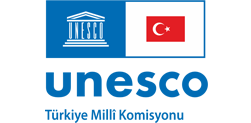
-
 About Us
About Us Detailed information about Zonguldak Coal Geopark and more...
About Us
About Us Detailed information about Zonguldak Coal Geopark and more... -
 Enjoy
Enjoy
-
 Discover
Discover Discover Zonguldak Geoparks
Discover
Discover Discover Zonguldak Geoparks -
 Learn
Learn
-
 Activities
Activities
-
 GeoNetwork
GeoNetwork
-
 Contact Us
Contact Us
Contact Us
Contact Us


Although Zonguldak is one of the relatively small (3,342 km2) provinces of Turkey, besides being a coastal city, it has scientifically valuable terrestrial natural assets. Most of them are geological heritage. In particular, caves of different sizes and types, sinkholes and canyons, and the existence and operations of hard coal stand out. Hard coal and the rocks in which it is deposited belong to 350-325 million years ago and are found in very few places not only in our country but also in Europe and Asia. In this respect, it has important scientific values. Caves, on the other hand, have their own unique ecology, especially bats. Most of the caves containing bats, and a large part of the bat population in our country are also in Zonguldak caves (Albayrak, ed., 2014. The Bats of Turkey, Balıkeir). Another value is the Sofular cave, where the analyzes on the stalactites have been published in very important international journals (Quaternary Science Reviews 30 -2011-, p. 2433-2445), and it has been understood that these are the climate records of the last 10,000 years of Turkey and the Middle East. That's why Sofular Cave is recognized worldwide in scientific circles. On the other hand, its very rich vegetation, being a coastal city, interesting geographical location, magnificent landforms, very rich cuisine, local values at district level (eg Devrek walking stick) and the above-mentioned geological richness are not well known locally, nationally and internationally. In order to utilize this rich natural and cultural potential, to protect the existing natural assets in addition to the economy based on coal and coal mining, and to include them in the daily life of the people through tourism, local authorities have decided to establish and develop a "geopark". This decision is a historical transformation for our province, and it is the beginning of the effort to fuse industry with culture and nature tourism and to enrich its economy and social image.
The "Zonguldak Coal Geopark" project, which was decided to be established, covers the entire province of Zonguldak due to the fact that the geological values are scattered at the provincial level, therefore, the land borders of the proposed geopark are the same as the provincial borders. The border in the sea direction passes 2 km off the coast. The coastal length is 80 km, so 160 km2 of the geopark is in the sea, and its total area will be 3.342 +160 = 3,502 km2.
The first values to be discussed within the scope of the Geopark project are the Hard Coal Enterprises and their abandoned galleries, Gökgöl Cave (opened for tourism), İnağzı Cave (organized for visiting), Filyos Castle, Kapuz Beach, Cennetağzı Cave, Sofular Cave, Cumayani Cave, Billaos Ancient City, Teion Ancient City. The city will be Filyos Aqueducts, Halil Paşa Mansion, Abandoned Mine Equipment and Structures (industrial heritage).
The geopark project decision was taken by the "Zonguldak Tourism Infrastructure Service Association", whose short name is ZONTAB. The Union was established with the participation of Zonguldak Special Provincial Administration, Provincial and District municipalities and four villages, based on the Law on Local Administrative Unions No. 5355, and has a budget and spending authority. Establishing and operating a geopark is included as a separate article in the Union's statute.
ZONTAB will carry out the Geopark project with a large Advisory Board, including geoscientists, and administrative and scientific coordinators. Cooperation protocols were signed with Zonguldak Special Provincial Administration, Zonguldak Municipality, Zonguldak Provincial Culture and Tourism Directorate, Zonguldak Bülent Ecevit University, Turkish Hard Coal Corporation (TTK). In addition to the financial support of these institutions, there will be experts in the Advisory Board and their scientific contributions will be received. The primary goal of the project management is to enlighten all Zonguldak people on geopark and geotourism issues and to increase the contribution of the local public.
The administration place of the Geopark project will also be the Geopark Visitor Center. For this purpose, one of the abandoned coal washing facilities of TTK was taken over by ZONTAB, and the repair and arrangement has reached the final stage. The Coal Museum and Training Quarry (mine) currently operated by TTK can be used for the geopark project.
Zonguldak is a typical mining town based on the discovery of hard coal (1829) and its commissioning (1847). Construction, like in all mining towns, has been rapid and often random. On the other hand, Zonguldak is one of our first cities to be illuminated by electricity. It is also noteworthy that the first cinema and the first theater were the places where heating was first applied. The geopark application and the UNESCO Global Geopark diploma, which is expected to be obtained soon, will be an important trademark for our city as well as for our country, and will be the registration of our natural assets.